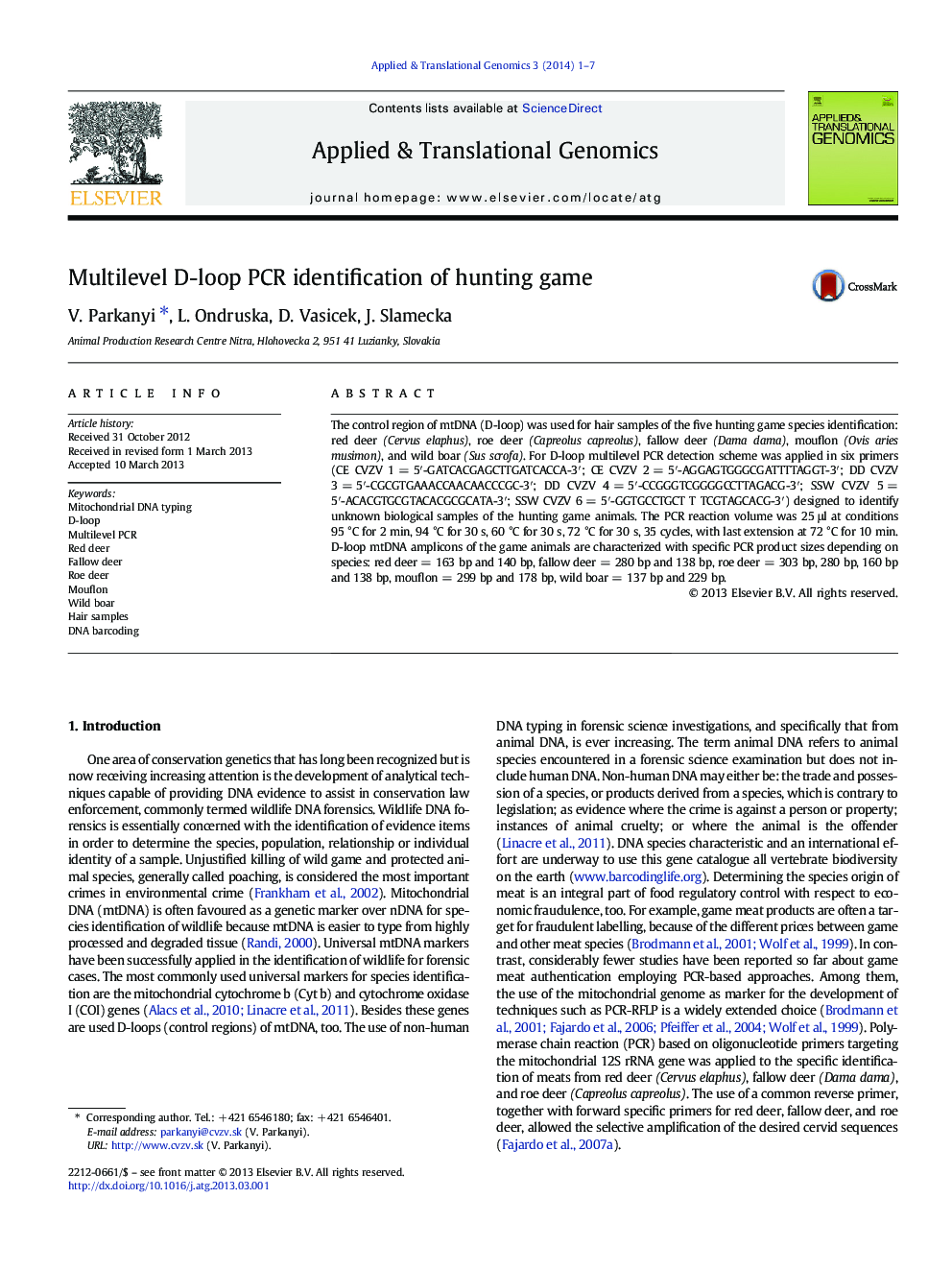| Article ID | Journal | Published Year | Pages | File Type |
|---|---|---|---|---|
| 2772961 | Applied & Translational Genomics | 2014 | 7 Pages |
•Multilevel PCR was used for the identification of five hunting game species.•Six specific primers were designed to analyse D-loop of the five game species.•Technology is suitable for detection of unknown biological samples from wildlife.•The oligonucleotides sequences were registered in www.boldsystems.org.
The control region of mtDNA (D-loop) was used for hair samples of the five hunting game species identification: red deer (Cervus elaphus), roe deer (Capreolus capreolus), fallow deer (Dama dama), mouflon (Ovis aries musimon), and wild boar (Sus scrofa). For D-loop multilevel PCR detection scheme was applied in six primers (CE CVZV 1 = 5′-GATCACGAGCTTGATCACCA-3′; CE CVZV 2 = 5′-AGGAGTGGGCGATTTTAGGT-3′; DD CVZV 3 = 5′-CGCGTGAAACCAACAACCCGC-3′; DD CVZV 4 = 5′-CCGGGTCGGGGCCTTAGACG-3′; SSW CVZV 5 = 5′-ACACGTGCGTACACGCGCATA-3′; SSW CVZV 6 = 5′-GGTGCCTGCT T TCGTAGCACG-3′) designed to identify unknown biological samples of the hunting game animals. The PCR reaction volume was 25 μl at conditions 95 °C for 2 min, 94 °C for 30 s, 60 °C for 30 s, 72 °C for 30 s, 35 cycles, with last extension at 72 °C for 10 min. D-loop mtDNA amplicons of the game animals are characterized with specific PCR product sizes depending on species: red deer = 163 bp and 140 bp, fallow deer = 280 bp and 138 bp, roe deer = 303 bp, 280 bp, 160 bp and 138 bp, mouflon = 299 bp and 178 bp, wild boar = 137 bp and 229 bp.
